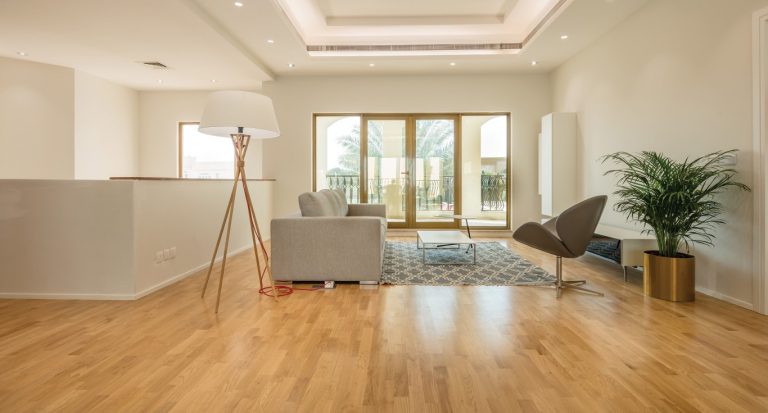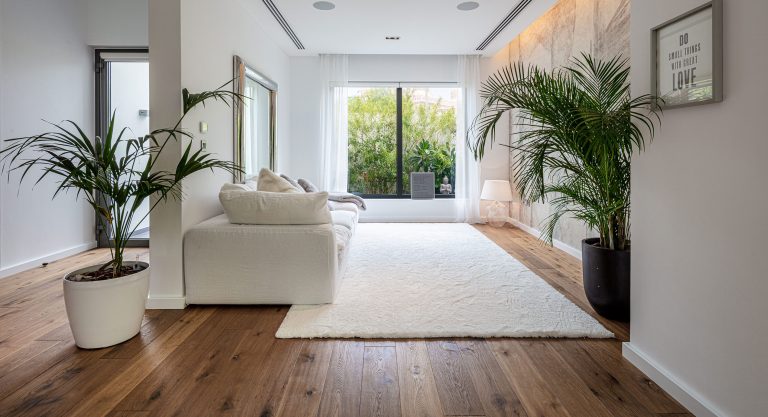Floor Protection for Painting: Here’s How to Protect Your Floors When Painting
July 26, 2024
Wall colors play an important part in the overall design of a room. When you design your room, you choose the color that works well for the overall look you wish to achieve. But sometimes, you can get bored with your wall color and desire change. Maybe you want to choose a wall color that matches your wood flooring better than your current wall color.
Painting your walls and giving them a new color can be fun, but you must remember to protect your floors when painting to prevent floor damage. To keep your floors in good condition, keep them safe from paint spills and splatters. In this blog, we will guide you on how to protect your floors when painting.
Here’s a Guide on How to Protect Floors When Painting

Follow these steps for protecting floors when painting.
Gather Your Materials
The first thing to do before you begin painting is to gather all necessary materials, such as masking tape, scissors, and most importantly, the floor protection material. The following are covering material options:
-
Rosin Paper
If you have hardwood floors, vinyl floors, or tile floors, use rosin paper. Rosin paper is a heavy-duty paper that’s often used to protect surfaces during construction. It’s also easy to walk on, making it an ideal choice for floor protection for painting. You can find this material at home supply or home improvement stores.
-
Plastic Drop Cloths
An alternative option would be plastic drop cloth. Plastic drop cloth is a less expensive option, but you should note that they are slippery to walk on. Additionally, paint spills will not dry on plastic drop cloths, so when you step on the paint, there’s the risk of carrying wet paint on your shoes to other surfaces.
-
Tablecloths
Another inexpensive way to protect your floors is using vinyl tablecloths. They are usually used for picnic tables, but if you are painting more than one room, you can still protect your floors without spending a lot of money if you use tablecloths. They can be effective materials for keeping your floors safe while you paint.
Remove All Items in Your Room
It’s better to remove all items in your room before you begin painting. This task serves various purposes: to protect your furniture, to cover your floors properly, and so that you can move freely.
Of course, you wouldn’t just want to protect your floors; you should also ensure that no paint spills go to your furniture. Additionally, you also wouldn’t want to bump into furniture or trip over things while painting. So, it is better to remove all your stuff in the room.
Clean Your Floor
Now, don’t just put on floor protection material immediately. You may be too excited to get into painting already but remember that you should clean your floors first before you cover them. If you removed all items in the room, including furniture, the better. Now that the room is empty, this is the perfect time to clean your floors.
You should also clean your floors so that no dust, dirt, or debris would be trapped underneath your floor covering while you paint. Simply sweep your floors and vacuum them. Go through your entire flooring and clean your floors thoroughly.
Apply Masking Tape to the Floor Perimeter
Now that your floors are clean, you can apply masking tape to the floor perimeter. Apply a few inches of masking tape around the room, on the floor edges. This will prevent paint spills on the edges of the floor and ensure that every part of the floor is protected.
Put Your Floor Covering Across the Floor
The next thing to do is to put the floor covering you have chosen to protect your floors. Spread the floor covering across the floor, laying it down flat so that it is lined up against the wall. Make sure to stretch the covering so that your entire floor will be covered.
Cut Off Any Excess Material Using Scissors
If there is any extra covering, cut them off using scissors. Cut the excess parts along the last edge of the room. You can use the excess material in the future, but make sure to take them out of your room so that you won’t trip over them.
Line the Edges of the Floor Covering Up With the Wall
Make sure that the entire floor is covered and that there are no exposed areas. Line the edges of the covering up with your wall so that it covers the initial tape layer.
Tape the Edges
Once the covering is properly aligned, you can now tape the edges to ensure protection and then begin painting.
Important Things to Remember When Painting
Take note of the following when painting your walls.
Have Cleaning Supplies Nearby and Clean Paint Spills Immediately
If you have covered your floors, it’s unlikely you’ll have paint spills on your floors. However, it’s also wise to take precautions just in case accidents happen or if paint soaks through the material. Have cleaning supplies nearby and clean spills immediately. It can be heartbreaking to have stains on your wood floors as a result of paint spills, so clean as fast as you can.
Put a Doormat Near the Door
Now, you should remember to protect the floors of other areas in your home. Paint might get into your shoes, so put a doormat, old rags, or old towels near the door to prevent the spreading of paint to other rooms.
Protect Not Only Your Floors, but Also Your Furniture
As mentioned earlier, you should remove all items in the room before you begin painting. However, some furniture may be very heavy or difficult to move, and if you can’t remove them temporarily from your room, make sure to protect them by covering them. Cover your furniture and make sure that no paint gets on them.
Final Thoughts on Floor Protection for Painting

Giving your walls a new color can be exciting, but you should never forget to protect your floors when doing so. Floors add to the beauty of a room, and you want to ensure you protect your hardwood floors in the long run and keep them in good condition. So, protect your floors before you paint your walls.

Warm Regards,
Pauline Madani
Founder & Managing Director Nordic Homeworx





